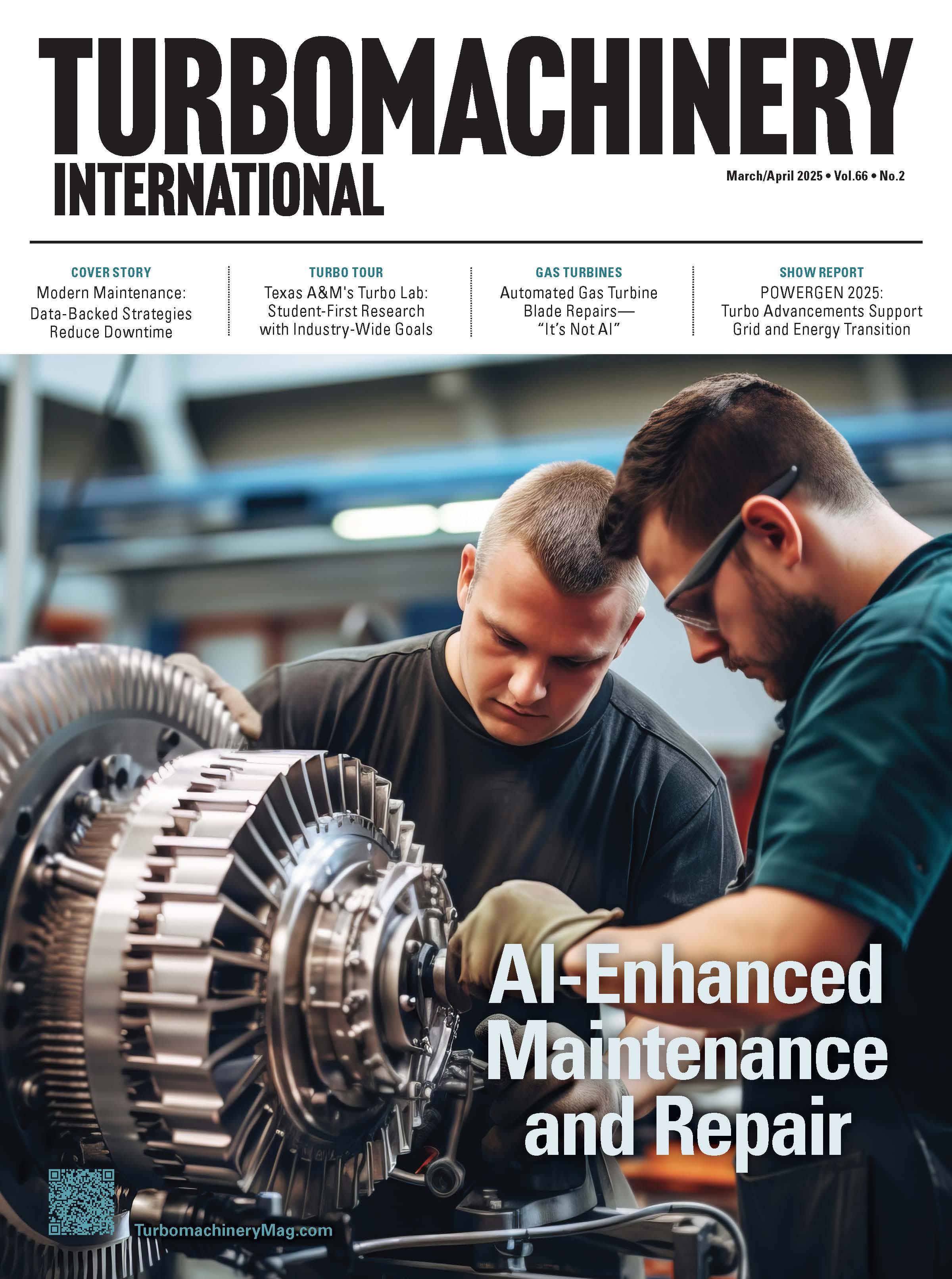Myth: Torsional Vibrations – No Problem
Although torsional vibrations in turbomachinery trains are usually well-controlled, issues should be addressed proactively during the design process.
A turbomachinery train consists of various components, including turbines, motors, gearboxes, compressors, pumps, and generators. Couplings connect the drive shafts of these components to adjacent components, and each has its own rotational stiffness and inertia. This allows the system to torsionally vibrate at multiple frequencies, with the dominant modal frequencies generally corresponding to the number of flexible couplings. While torsional analysis is heavily emphasized in the design of reciprocating machinery, turbomachinery trains are often perceived as less susceptible to these issues. However, this may not always be the case.
Torsional vibrations refer to angular oscillations along the axis of rotation. Like any dynamic system, a turbomachinery train has natural frequencies determined by its configuration. The stiffness and inertia of components—connected by couplings such as quill shafts, gear couplings, or disc couplings—influence these frequencies. Adjusting coupling stiffness, a process known as tuning, can cause natural frequencies to be shifted to avoid resonance within the operating speed range. Avoiding natural frequencies this way is the primary method of managing torsional vibrations.
Damping is another method of addressing torsional vibrations, though it is often minimal in turbomachinery trains and primarily comes from the gearbox. Additional damping can be provided by specialized elastomeric couplings with rubber block elements, though these are typically used to handle motor transients and can become maintenance-intensive. Fluid drives, such as torque converters or fluid couplings, are another option for managing torsional vibrations.
Torsional issues arise when a source of excitation introduces harmonic frequencies into the system. The most common excitation is at the running speed (1x), though other frequencies may be introduced depending on the driver. Gas and steam turbines typically provide uniform speeds, with higher frequencies from blade-passing events, which are generally weak in amplitude. Electric motors with variable frequency drives can generate excitations due to harmonics caused by imperfect sine waves and multiples of the difference between the grid frequency and motor supply frequency. These are often referred to as torque ripples. Transient events, such as across-the-line starting or electrical faults like phase-to-phase or phase-to-ground faults, can also excite multiple natural frequencies. These torque spikes, which can reach multiples of the design torque, can be severe enough to cause fatigue or crack propagation in couplings or shafts.
Gas and steam turbines usually provide smooth acceleration, with critical moments occurring only when the system speed crosses a torsional natural frequency. These events are typically brief and not significant enough to cause fatigue. However, starting an electric motor without speed control can produce large torque spikes, which may pose a serious risk. Electric motors are also susceptible to fault transients, such as short circuits, which can lead to substantial torque spikes that excite all natural frequencies in the system.
One of the challenges with torsional vibrations is that they are often difficult to detect. Most turbomachinery trains are not instrumented to monitor torsional vibrations, and typical torque meters used for power measurements cannot resolve them. As a result, torsional issues may remain unnoticed until a shaft or coupling fails, often causing significant damage and disruption. This raises critical questions about whether the train equipment is adequately designed to handle torsional vibrations, whether the motor can operate at rated conditions without causing issues, whether high-speed couplings are safe under all conditions, and whether the train can endure transient torque levels from motor fault events. Designers must also ensure that all equipment meets endurance requirements for air-gap torque pulsations.
The primary objective of a torsional integrity study is to identify the natural resonances of the train and compare them to the operating speed range of the low-speed and high-speed shaft systems. The first few torsional resonances, usually the first three, are the most important because of their higher energy content. Harmonic excitations from train speeds and variable frequency drive output frequencies must be analyzed to avoid interference. Where interference cannot be avoided, the system must be shown to operate safely under those conditions.
Torsional vibrations in turbomachinery trains are usually well-controlled through careful design and analysis. However, problems are often not detected until significant damage has been caused, underscoring the importance of addressing torsional issues proactively during the design process.
To our readers: When writing the Myth Busters column, our goal is to provide arguments that are coherent and sometimes even cohesive but intentionally not abundantly forceful to encourage discussion, debate, and dissent. In this spirit, we ask you to provide us with more feedback on our topics through letters to either the editor or to us directly. We are also seeking ideas for future Myth Buster articles that are interesting dissections and disseminated.
About the Authors
Klaus Brun is the Director of R&D at Ebara Elliott Energy. He is also the past Chair of the Board of Directors of the ASME International Gas Turbine Institute and the IGTI Oil & Gas Applications Committee.
Rainer Kurz recently retired as Manager of Gas Compressor Engineering at Solar Turbines Inc. in San Diego, CA. He is an ASME Fellow and has published over 200 articles and papers in the turbomachinery field.
